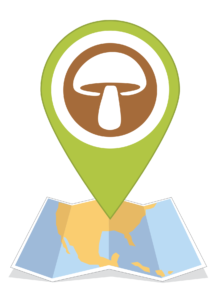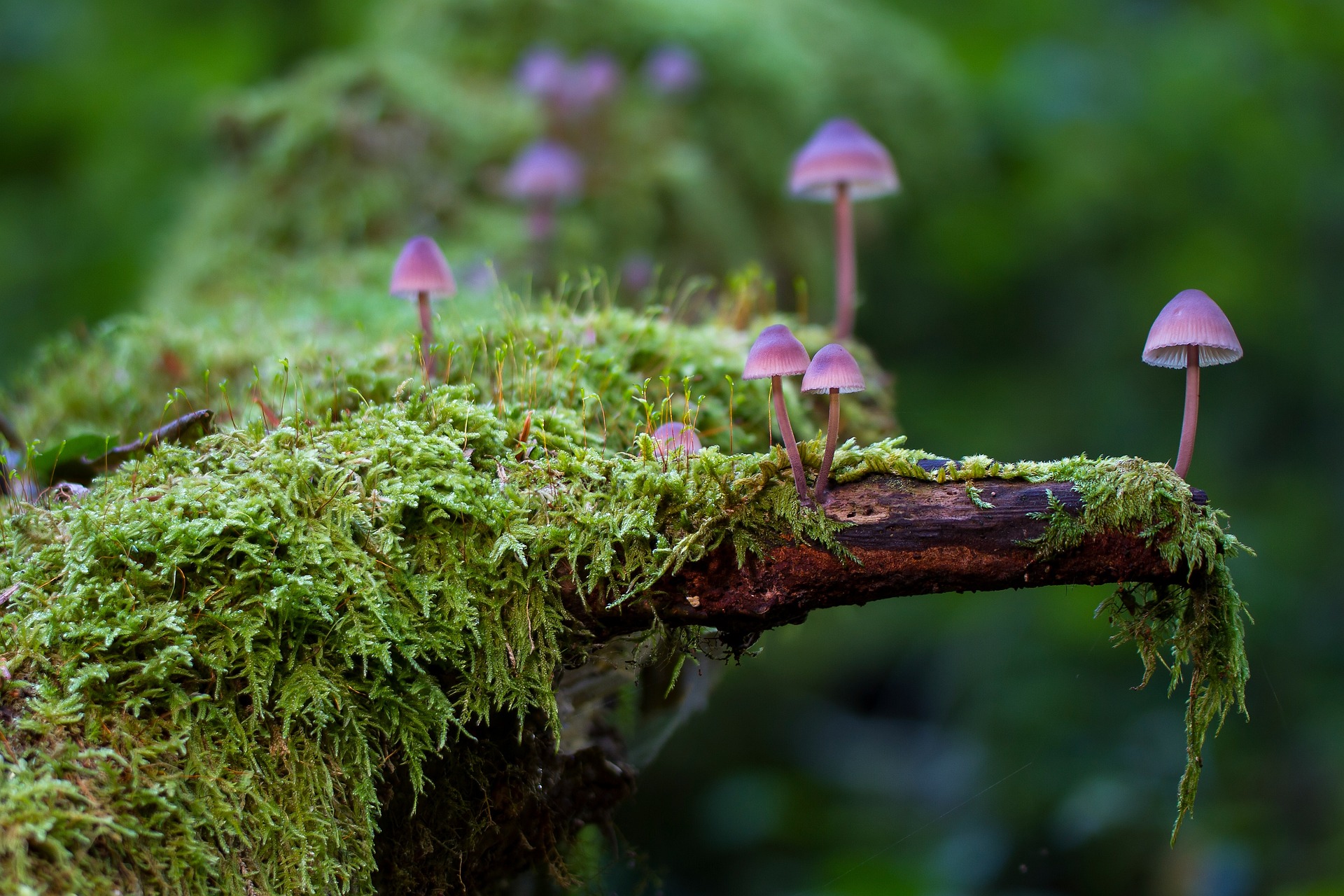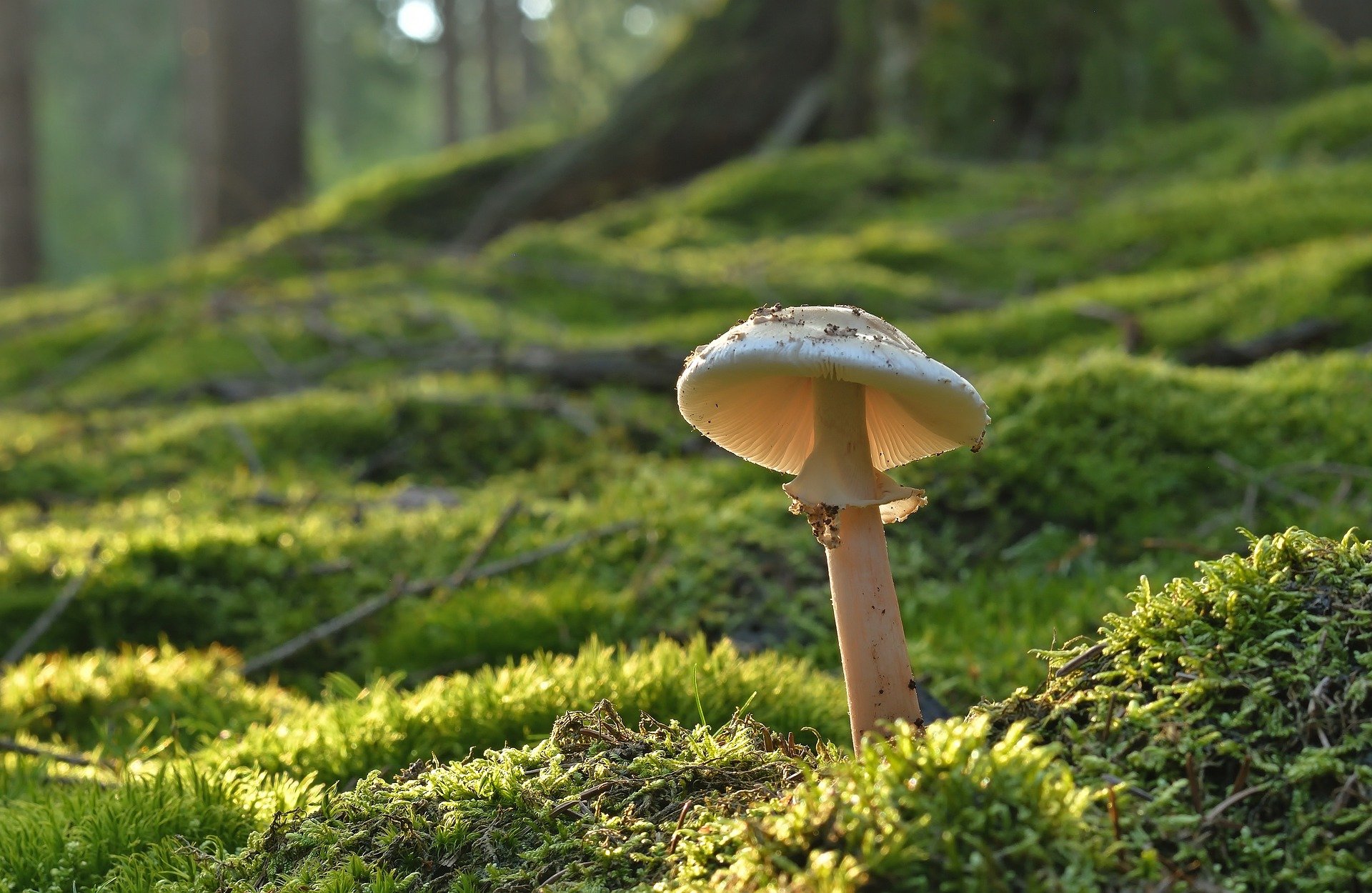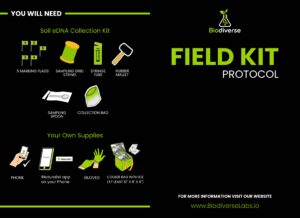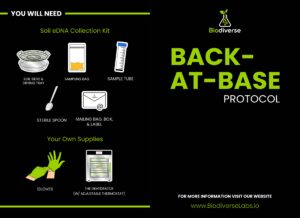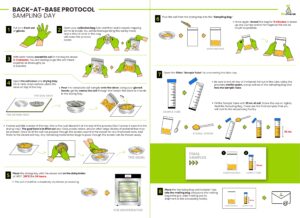Now forming a network of community scientists who desire to document all the macrofungi of California.
Free DNA Barcoding
All of the specimens you submit will have DNA barcoding attempted at no cost to you. This is a great opportunity to make an outsize impact documenting your local biodiversity.
Unlimited Specimens
As a collector for the MycoMap CA network, you can send in as many specimens from CA as you are willing to collect. We are particularly interested in uncommon or unusual specimens, but we will look at whatever you are able to find.
No Time Frames
Submissions to our lab from California used to be limited to the MycoBlitz.org event weeks. Now there are no time restrictions on when new specimens from California can be submitted to our lab.
Participation is as easy as:
1. Print Voucher Slips & Post to the iNat Project w/ Voucher Number
2. Dry Specimens
3. Mail them in for DNA
-
"Scientific collections are key not only to understanding the past and the present but to unlocking discoveries in the future."
So How Does It Work?
1. Prepare for the Field
Download the iNaturalist Mobile App – Both Android and IOS versions are available
Join The MycoMap CA Network - 2024 iNaturalist.org project.
Download and print your collection slips. These slips ensure the basic data is collected and help you to organize your collections.
2. Find mushrooms and document them on iNaturalist
Take multiple photos of the mushrooms you encounter with your cell phone or camera and collect the specimen.
Create new observations of the mushrooms on iNaturalist.org and add them to our project.
Enter the field data slip number into the “Voucher Number(s)” field in the mobile app or desktop browser.
3. Dry the specimens and mail them in!
Back at home, dry the specimens with a dehydrator or fan at 140F or less for 12-24 hours.
Put your dried specimens into snack-size ziplock bags (the wide ones, not the tall ones!).
Review additional notes regarding collections at the bottom of this page.
Mail the specimens to our lab for DNA sequencing. Email info@mycota.com.
Coming this summer: Environmental DNA (eDNA) from Soils
Document mushrooms when they are not fruiting!
- Each collection of a mushroom yields one DNA sequence of that single species from that specific location.
- Each sample of soil may barcode 500 or 1,000 species of fungi from that single location.
- Takes a few hours a few times a year.
As a member of the MycoMap CA Network, you will have the opportunity to submit soil samples from your local area. It is possible to examine the DNA of all of the fungi that currently exist in soil - even when a mushroom is not fruiting. By submitting soil samples, you may be able to document 500 or 1,000 species of fungi per sample - allowing you to document local biodiversity at a much faster rate than conventional specimen-based collections would be able to attain. We have tried to make the collection process simple: Soil eDNA Sample Collection Protocol. Participating in this component of the project would take 2-3 hours a few times a year.
About Us
Mycota Lab is a 501c3 molecular DNA laboratory based just outside of Ann Arbor, Michigan. The current focus of the lab is on documenting macrofungal diversity at large scales - with a goal of creating a reasonably comprehensive outline of North American macrofungal biodiversity by 2035. The initial goal formed in late 2022 was to sequence 10,000 specimens per year for the next 10 years, bringing in over 100,000 new collections. In 2023, over 20,000 specimens were attained. Mycota Lab has several key initiatives to achieve these goals. The first is the Continental Mycoblitz - www.MycoBlitz.org. For several weeks each year, any individual, from anywhere in North America can submit specimens to our lab for free DNA sequencing. Thus far over 1,000 people from across the continent have participated in these events. The second key initiative is the MycoMap Network - www.MycoMap.org. For 2024, collectors can submit new specimens without restriction from the following areas for free DNA sequencing: Arizona, California, Indiana, Michigan, New Brunswick/PEI/Nova Scotia/Newfoundland, and Puerto Rico.
Local California Coordinators:
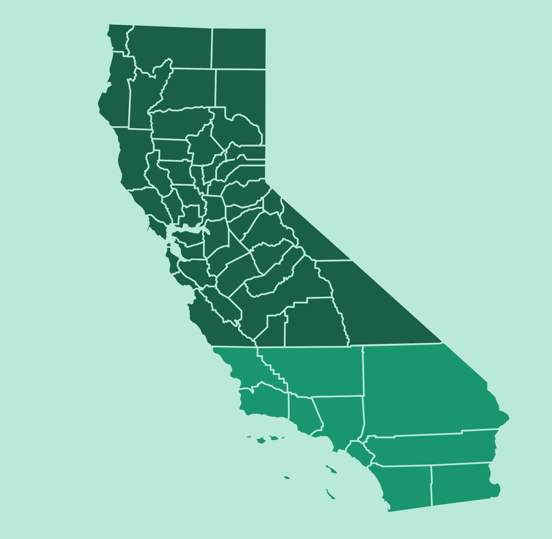

Frequently Asked Questions
1. Do I have to fill out a data slip for each mushroom I see? No, only for specimens you are collecting. If you are simply taking an image of a mushroom to document it, you do not need to fill out a field data slip for it. Just take the pictures and create a report of the observation online. Observations without specimens are welcome to be added to the project as well.
4. What if a mushroom is large. Do I have to collect the whole thing? No, just collect a small portion, such as 1/4 of the cap. Ideally your dried specimen should fit into a snack-size Ziplock bag.
5. Does the quality of the specimen matter? as in, what if it is starting to decay or is not perfect? Harvesting fresh as possible will always get the best results. Interesting things can be saved in less prime condition. Worse condition means lower success rates, but they can still be submitted if you have reason to believe the collection is particularly interesting.
6. Do I need the field data slips in order to participate? Yes, we do ask you to print out slips for the year of the event (2024 = CA24-XXXXX slips). We use these field slip numbers to organize specimens in the herbarium. But even for your collections, it is tough to maintain organization without them. We highly suggest you download them to help keep track of which specimen is what. Specimens change significantly as they dry, so you will likely not be able to identify the mushroom later in the process without some type of identifying number attached to it. If you do not have field data slips (or run out of them) use the iNaturalist number to keep track of your collections.
7. What if I run out of field data slips? You can print more data slips for the project at any time.
8. What do I need to fill out on each field data slip? The requested minimum information to fill out is the date, your name as the collector (you can use initials), the site name, and the collection date. The more information you are willing to save, the more valuable the report/specimen will be for science. Once your specimens are dry, please put the iNaturalist number for each collection on your voucher slips. The Foray ID field on the slips is not used for this event.
9. Do I need to smell and taste each mushroom? No, but this information is important for certain groups of mushrooms. These sections of the field data slip are optional, but encouraged. Also keep in mind that taste does not equal swallow. You can taste any mushroom without fear. Just gently chew a small bit of the mushroom and let it sit on your tongue for a few seconds to see if any specific taste starts to develop. Then spit the flesh out.
10. What are the numbers on the bottom of the field data slip for? The “Voucher Label for Drying” can be torn off and stored in your tackle box or basket with the specimen. This will allow you to keep the specimens organized with the pictures you take (be sure to take a picture of the field data slip with each specimen for the number and the scale bar on the side of the slip). The “Tissue Label” is not something we will be using as a part of this project. Please keep it attached to the field data slip with the specimens you send in.
11. Do I have to upload the photos using the mobile app? You have several options to get your images/reports onto iNaturalist. 1.) You can create reports using the mobile app in the field as you go along. If you do not have cell service, the app will store the individual reports until your phone is connected. 2.) You could take pictures in the field without using the mobile app, and upload individual reports later once you are back at home. (This is often the suggested method, as you don’t have to fuss with as much in the field and can spend more time enjoying nature.) Finally, 3.) You could take images with a regular camera and upload individual reports on the iNaturalist website through your computer browser.
12. Can I use online platforms other than iNaturalist to upload my observations for this event? Yes, but we would ask you to replicate them on iNaturalist. Our post-event data processing and aggregation is much easier if all of the observations are in a single location.
13. Can you return the specimens that are sent in? Unfortunately, we will not be able to return any specimens that are submitted. If you would like to ensure your specimens are retained, please only send a “split” or a portion of the collection to the processing facility. You are welcome to retain the remainder of your collection and submit it to a local herbarium.
14. Do I need to fill out the “Collector’s Name” observational field for each record? No, it only needs to be used if the name of the collector is different than the person submitting the observation. If you are primarily posting your own finds, iNaturalist has a “Display Name” field in your account settings that can be used for your real name. If this is filled out in your settings, then the name in this field will be associated with all downstream data, including the GenBank accessions.
15. What if a new species is discovered? Who gets the credit? iNaturalist has a “Collector’s name” field that can be filled out when submitting an observation, if the name of the collector is different than the person submitting the observation. The credit for the collection of a new species would go to the person who submitted the iNaturalist observation or the name of the individual in the Collector’s name field. We do not intend to formally describe any new species as a part of these events, at least in the near term, only outlining biodiversity. Collections are frequently forwarded to specialists on specific groups that have an interest in describing individual species. If you are personally interested in describing new species encountered, please retain a portion of your specimen for microscopy and/or other descriptive purposes, and you are welcome to use the DNA data that is generated as a part of your efforts.
16. Will this data be uploaded to GenBank? Yes, every collection that is submitted and that has a DNA sequence successfully generated will be uploaded to GenBank. We will not hold back any DNA sequences from public view for these events.
17. Does harvesting mushrooms hurt the environment? The short answer is no. It is misguided to think of harvesting mushrooms in the same terms as harvesting plants or other organisms. There have been multiple studies to explore this topic and the preponderance of evidence has not found harvesting to have a negative impact on the organism. Mushrooms are only the reproductive structure of the organism, like an apple on a tree. The main body of the organism lives under the ground or in the wood that you are harvesting the mushroom from. Walking through the woods off trail (ground compaction) is likely to have a greater impact on the environment than harvesting mushrooms. As always, there are caveats to these statements. Ex – harvesting large numbers of perennial polypores are likely to have different impacts on the organism that large numbers of Chanterelles.
18. Who is funding this project? The CA component of the project is currently being funded by the California Institute of Biodiversity and Hoosier Mushroom Society/Mycota Lab. We would appreciate additional funding partners who would help to fund specimens from their own localities, particularly other clubs interested in their local biodiversity to help spread the cost around the country. If your club/organization would like to be a partner on this project, please email us. If you are an individual who would like to donate to this project, and help us increase the number of specimens we can sequence, you can follow the QR code below to donate. The Hoosier Mushroom Society/Mycota Lab is a 501c3 organization.

19. I have more questions. Who can I contact? info@mycota.com
Some final pre-shipment checks:
- Preference is to have snack or sandwich size bags (6 1/2″ wide versions) without the plastic slide zipper.
- Please include the field data slip in the bag with the writing visible from the outside.
- The field data slip should have a CMXX- number, with XX being the current year. Ex – “CA24-.” The sequential field data slip numbers are important because it is how we organize them in the herbarium. Field data slips can be printed here: https://mycomap.com/events/event-slips?event=143
- Ensure the iNat number is written on each voucher slip. Please remove all of the air from the bags before shipping.
- Please put all of your specimens in sequential order by the collection number before shipment.
- It is fine to put all of your collections into a final gallon-size ziplock or as loose bags in the shipping box.
- Please ensure this CMXX- number is on each iNaturalist observation in the “Voucher Number(s)” observation field.
Additional requests:
- Please do not write on the exterior of the Ziplock. Include the iNat number inside the bag.
- No need to write a duplicate iNat number on exterior if it is visible on the field data slip from outside of the bag.
- There is no need to include silica gel packets in the bags. The specimen should be fully dried before shipment.
- There is no need to wrap specimens in paper within the bag or otherwise double bag individual collections.
- Please do not staple the field slip to the bag. Place it in the bag.
- Please trim the field data slips down if you only printed one per page.
- Ensure each slip has a unique number. Do not print multiple copies of the same slip number.
- Please ensure your specimens do not have any excess dirt or debris in the bag.
Send your specimens to:
Email info@mycota.com when you are ready to send in your collections.

